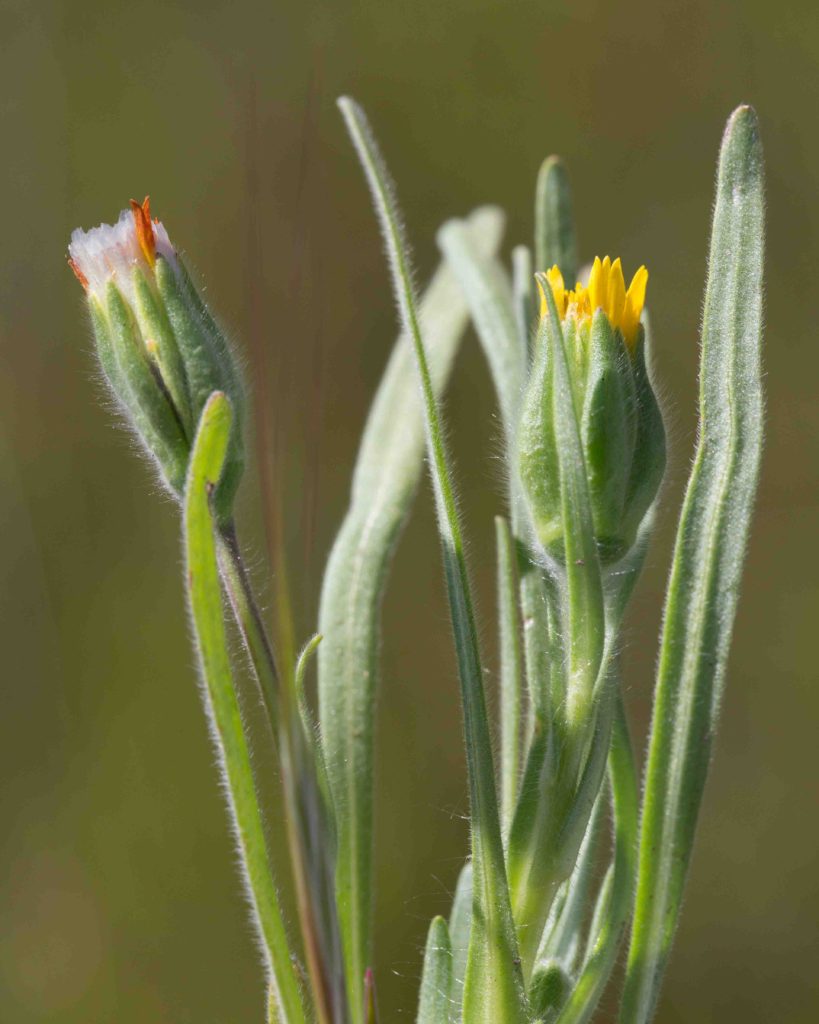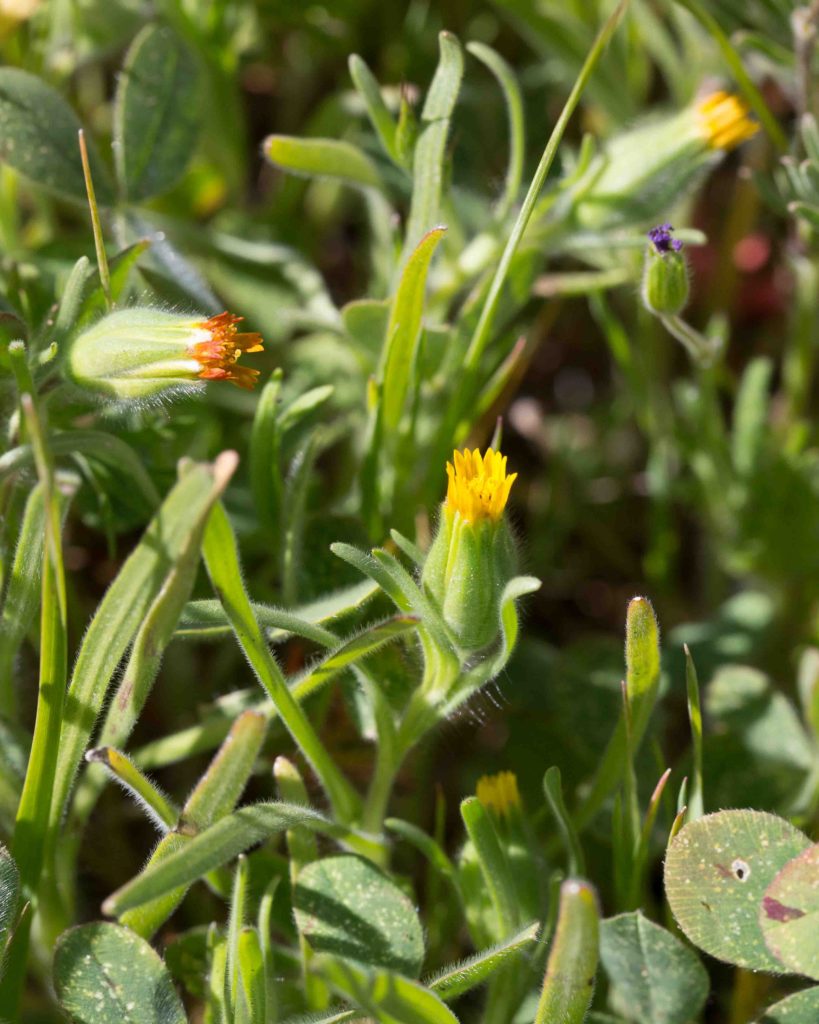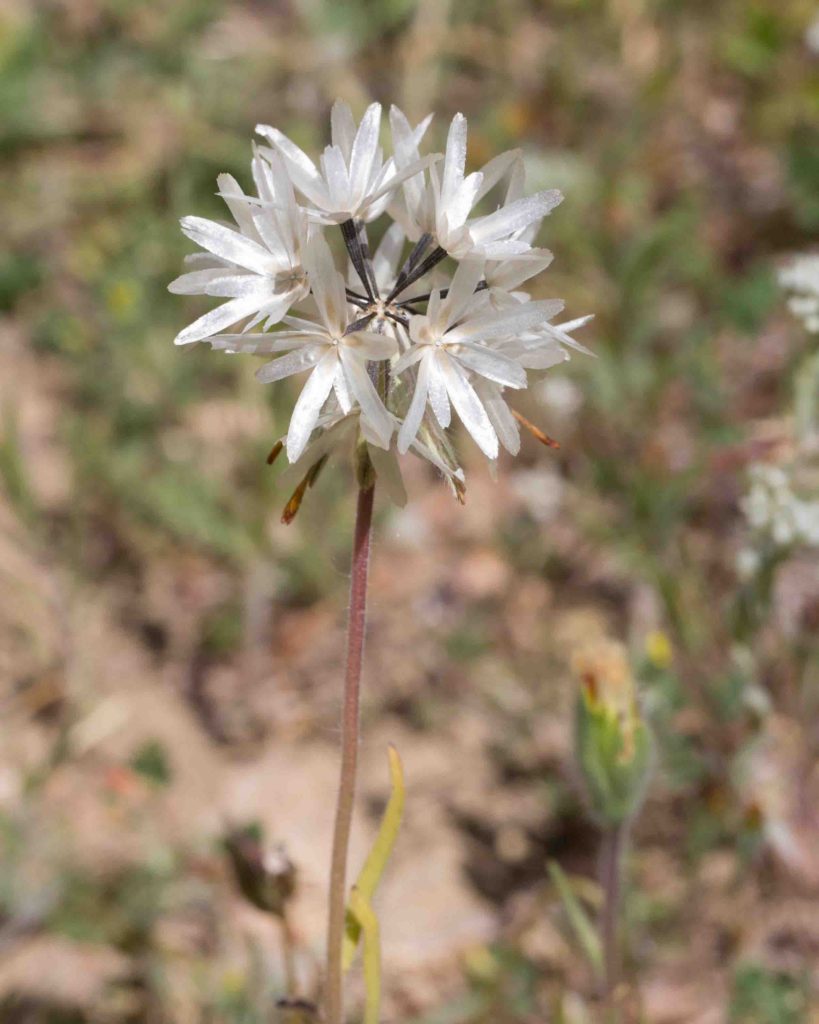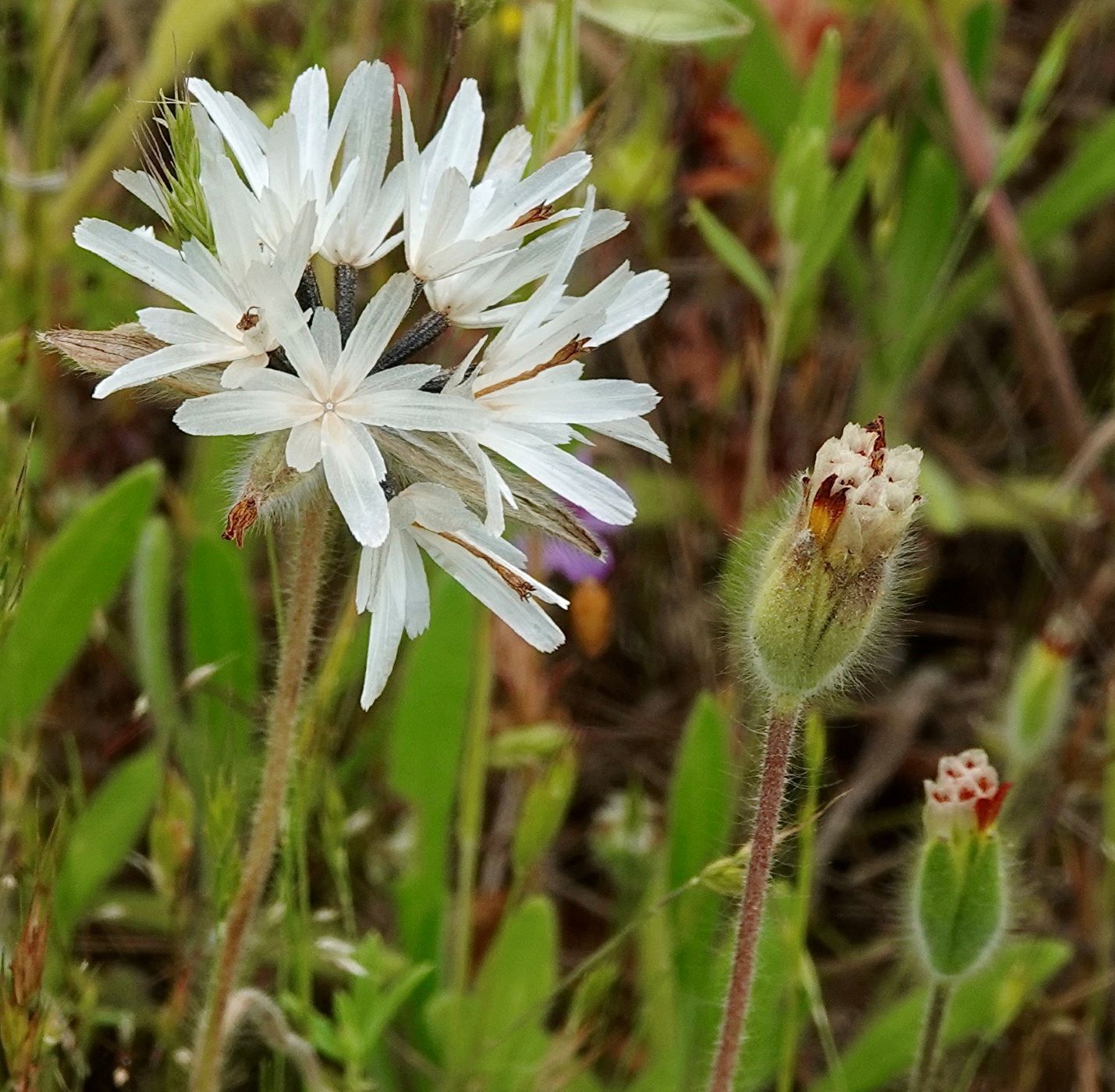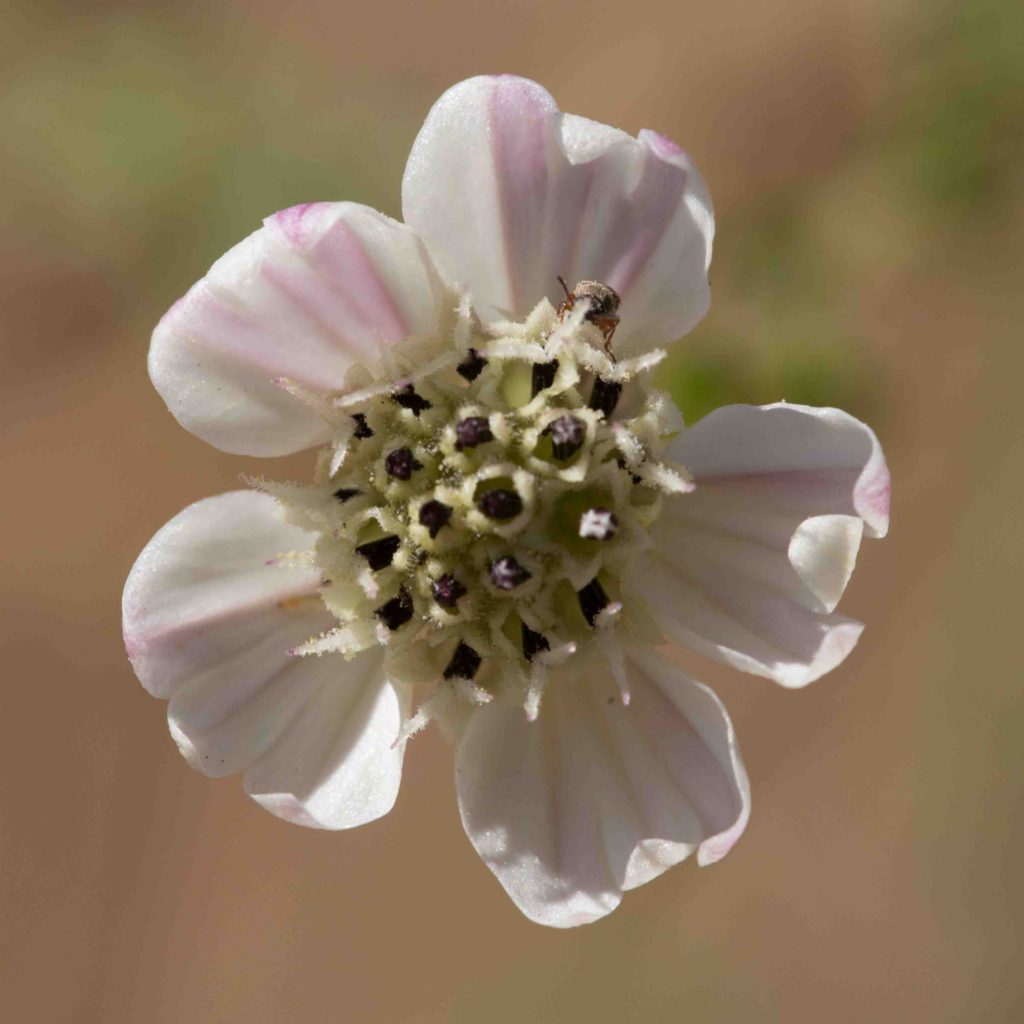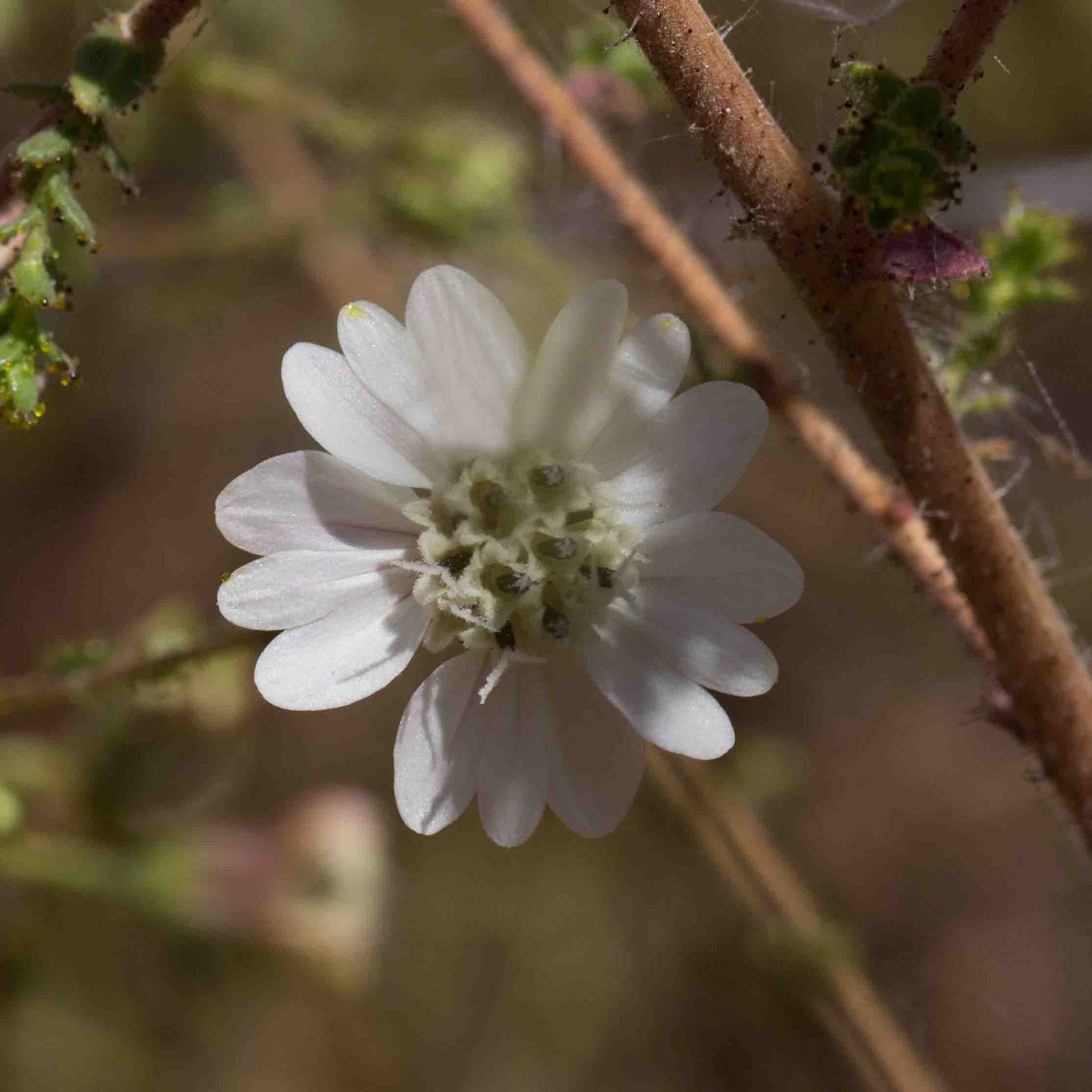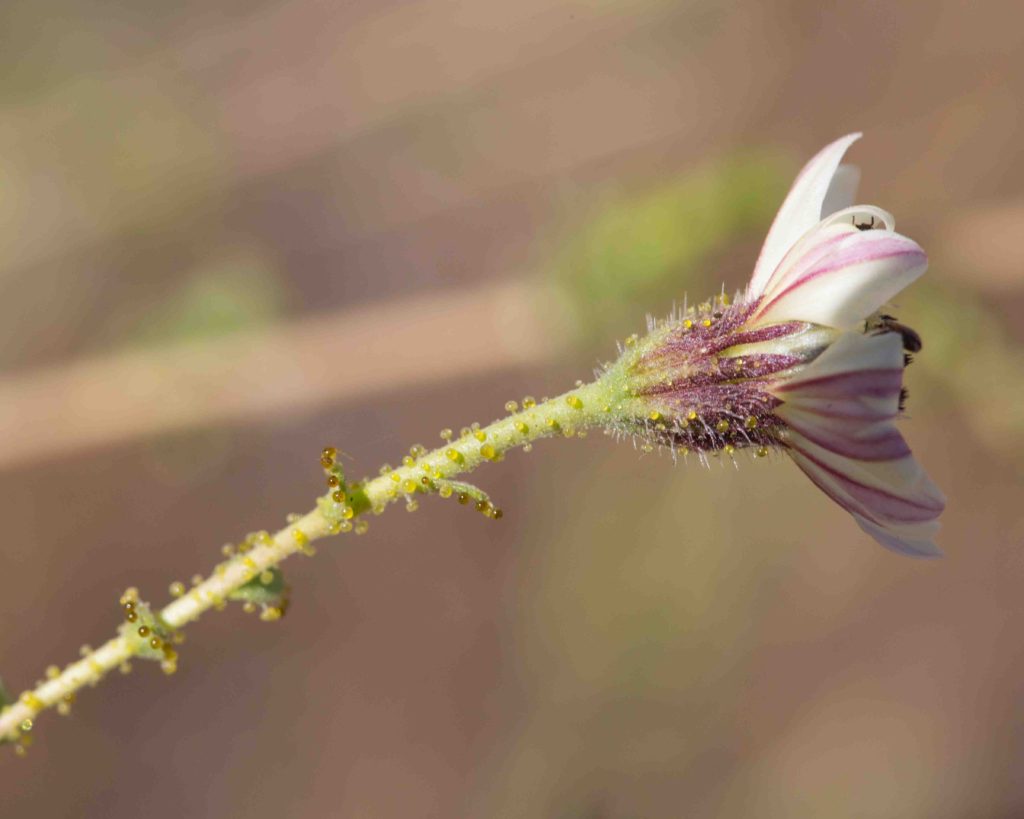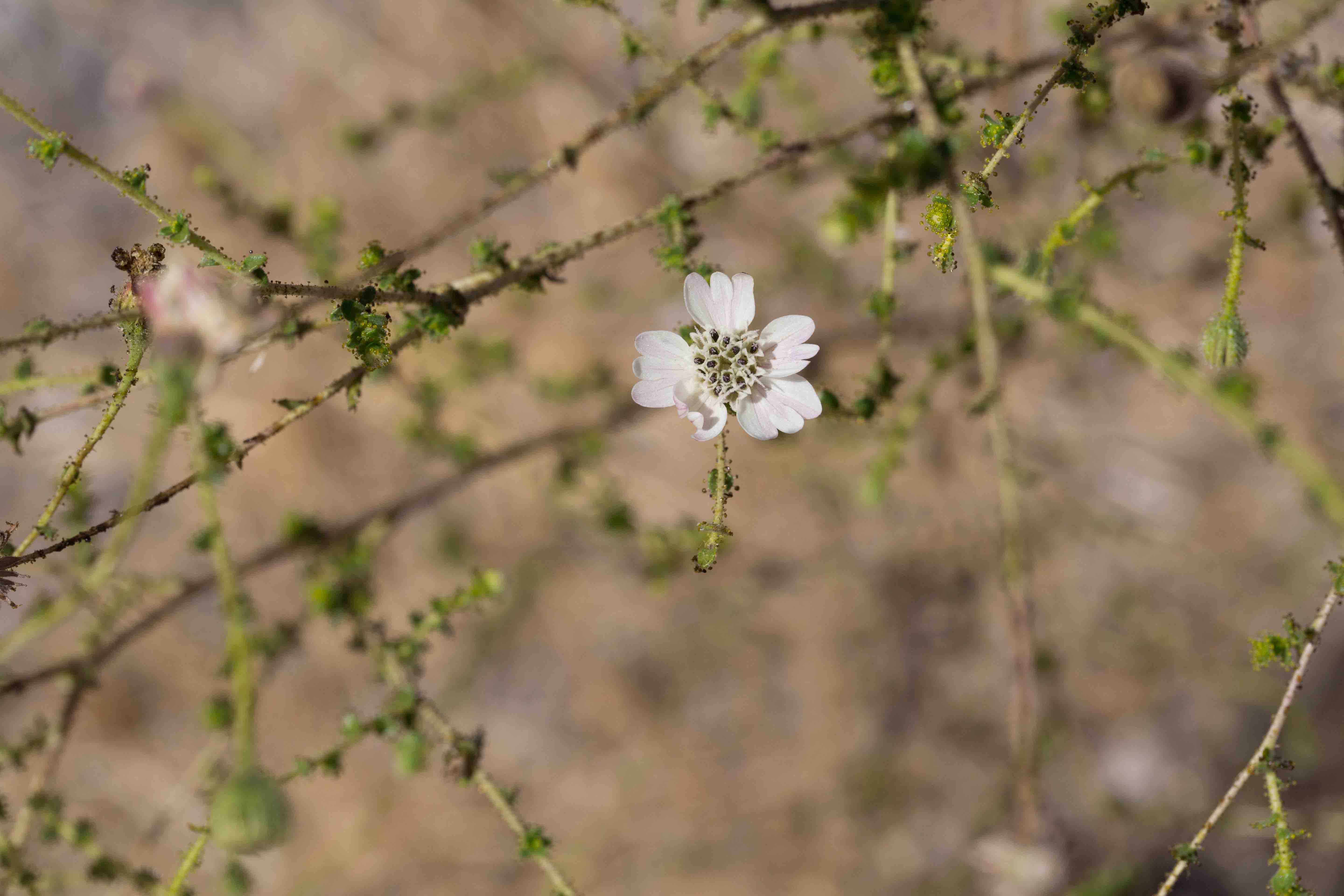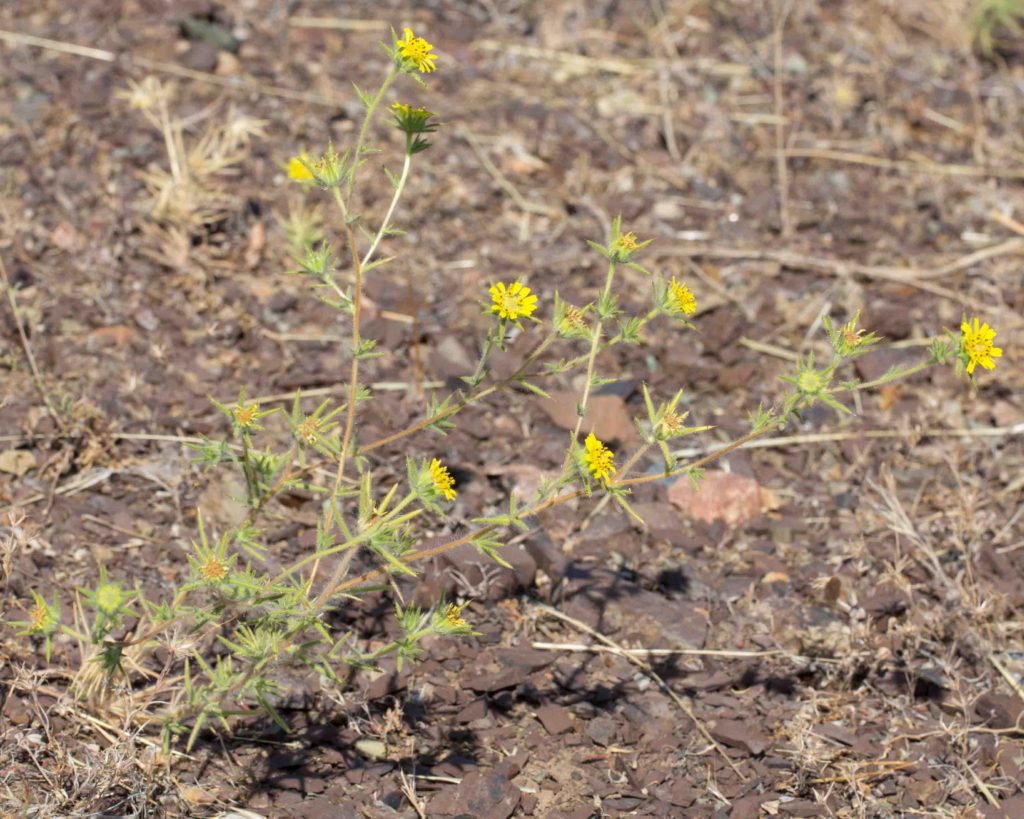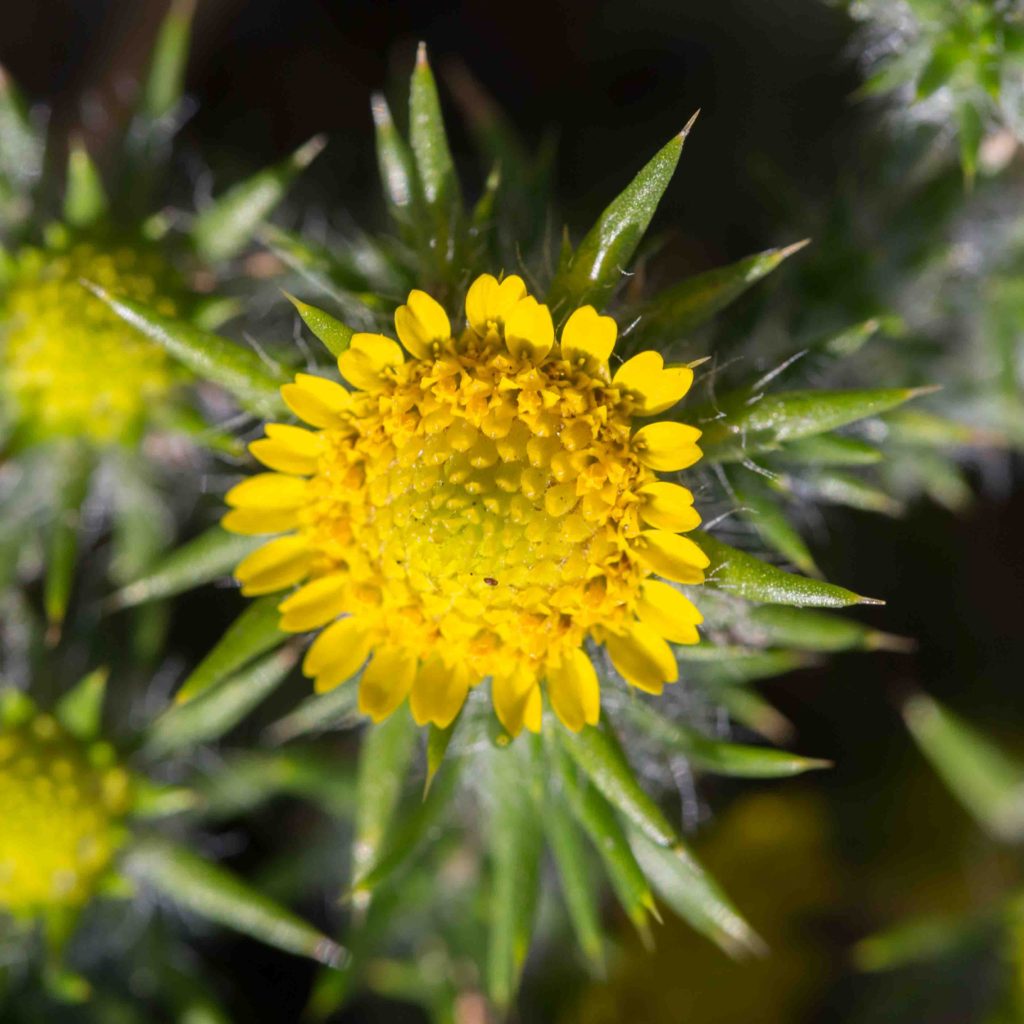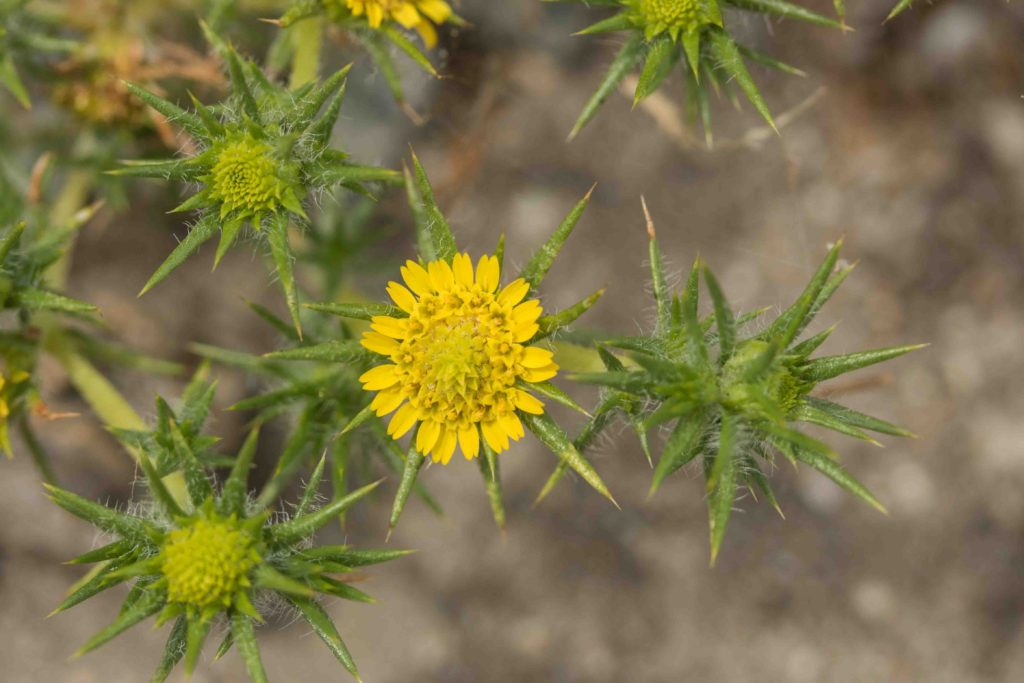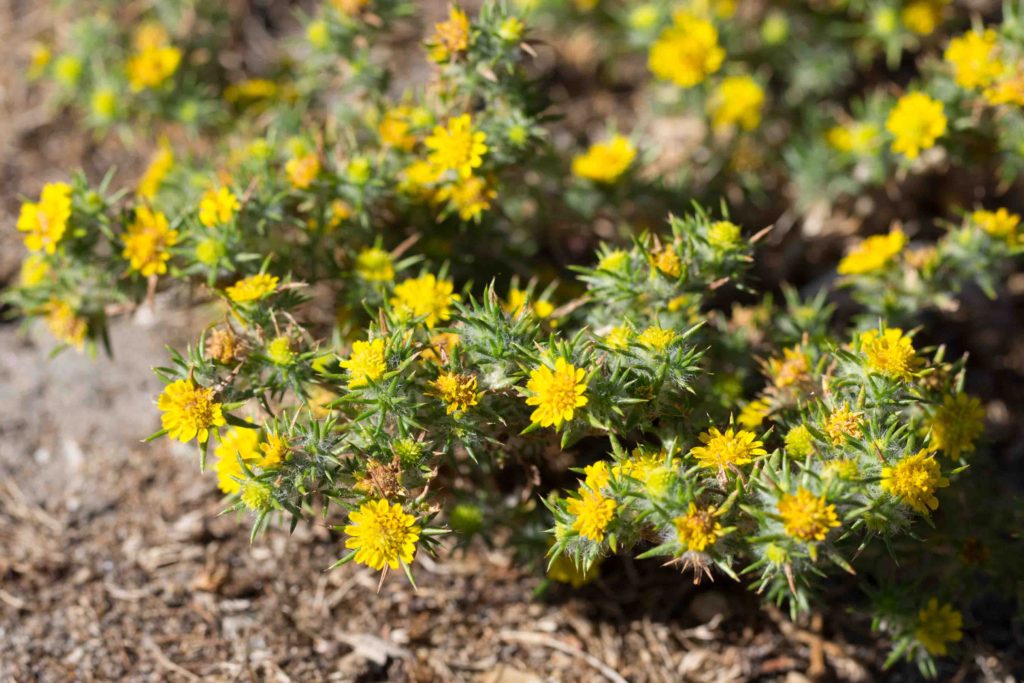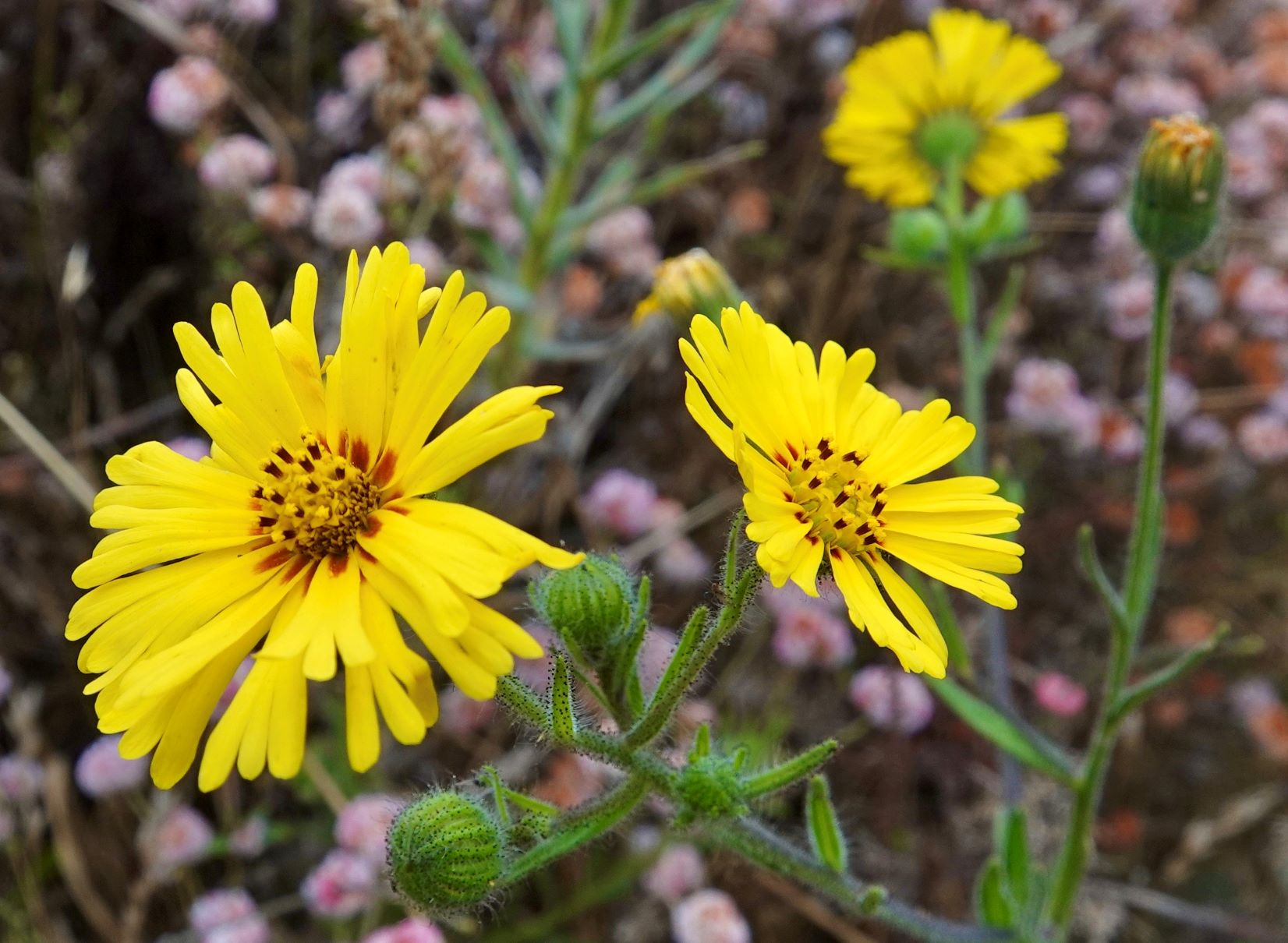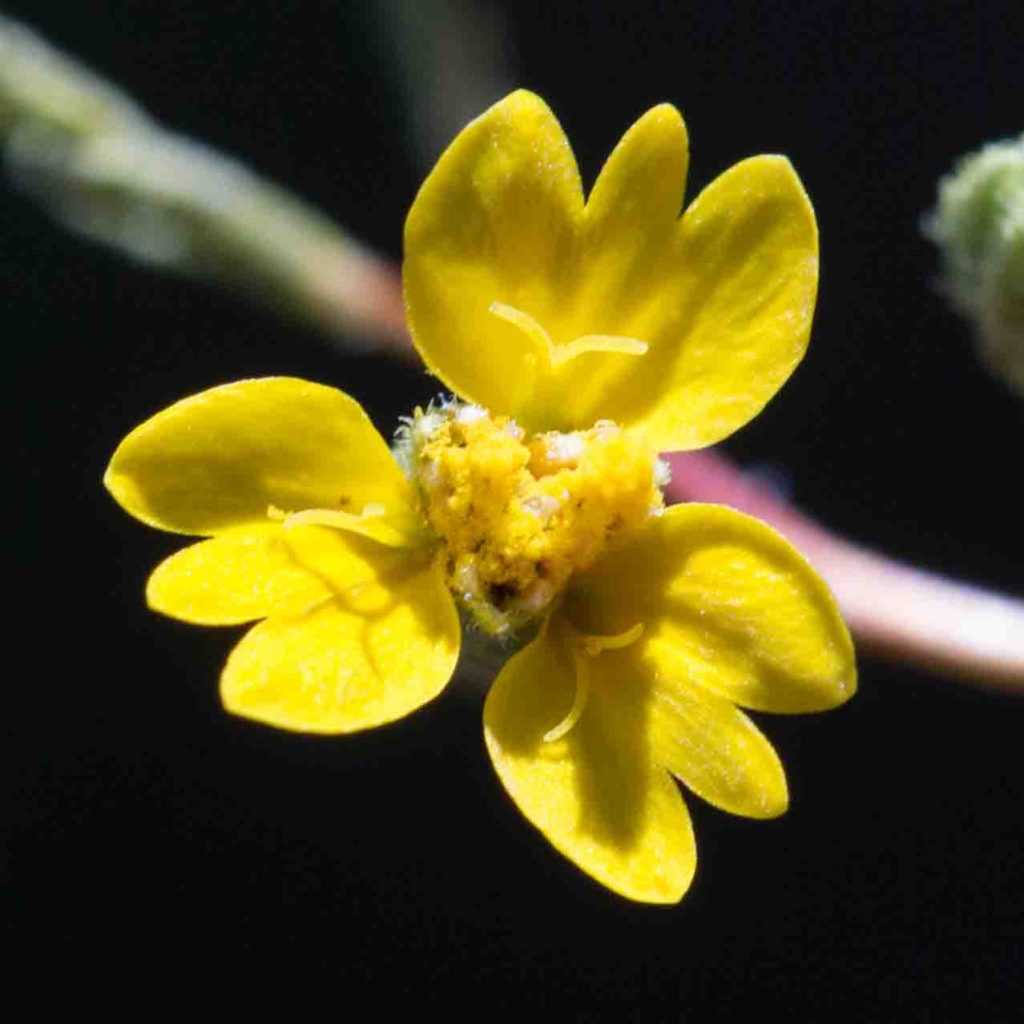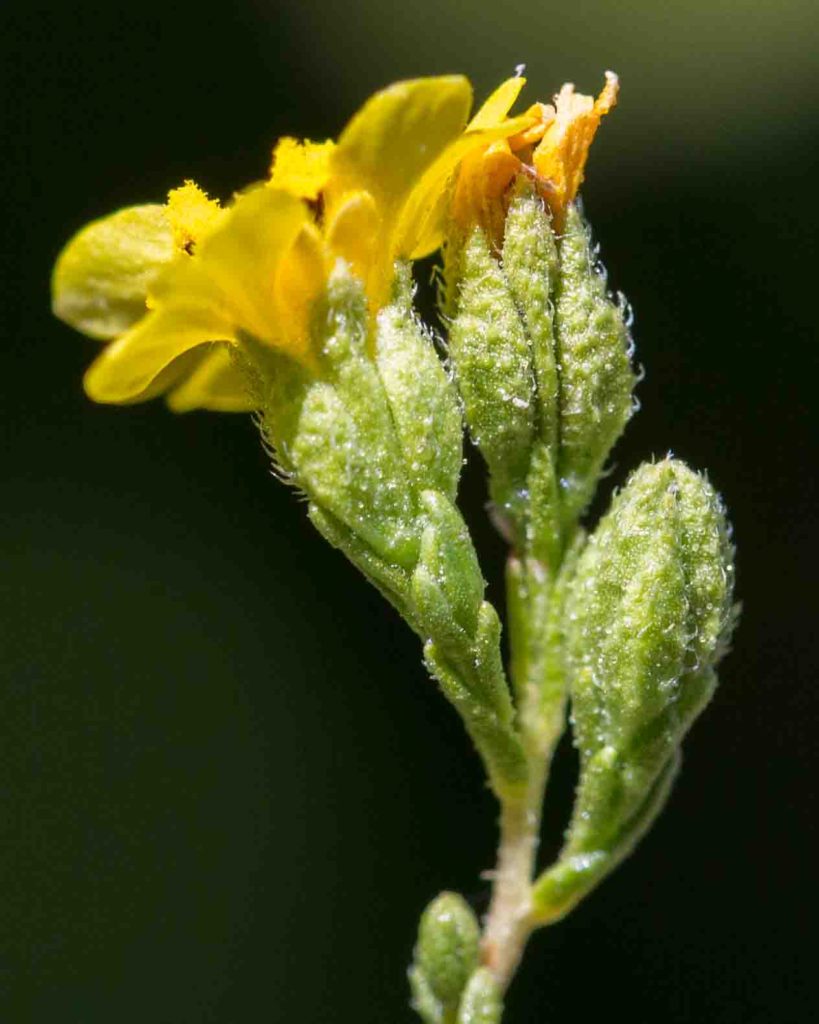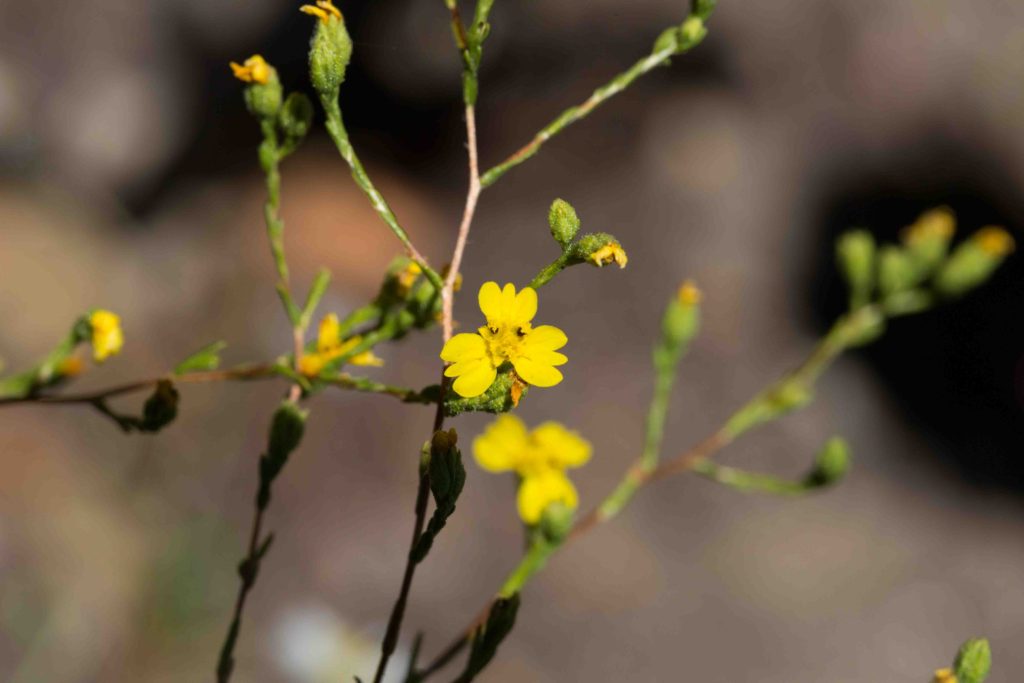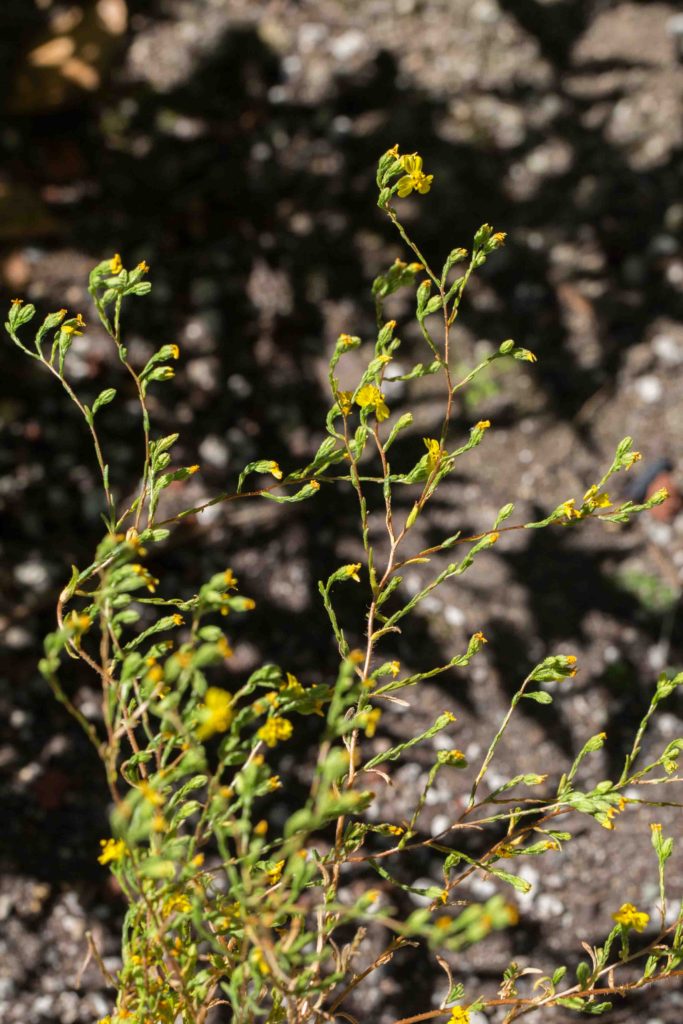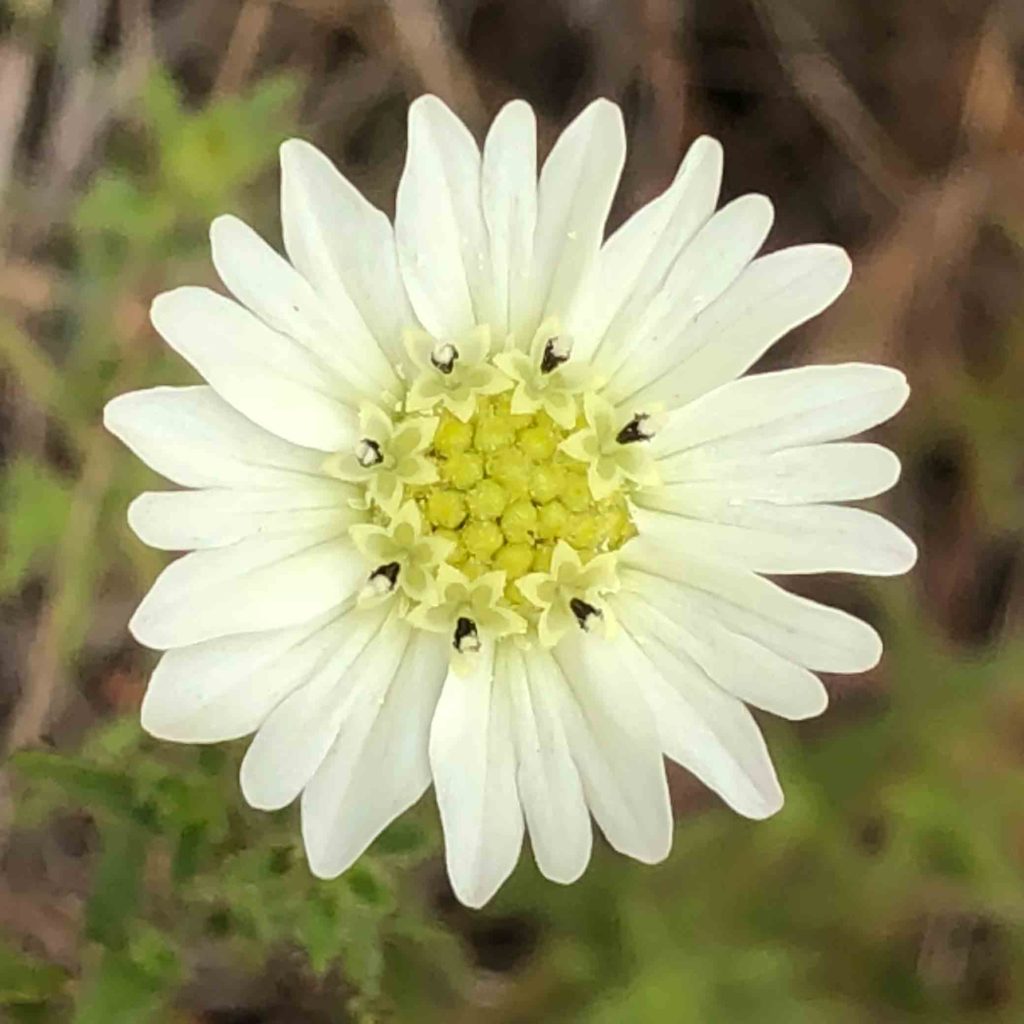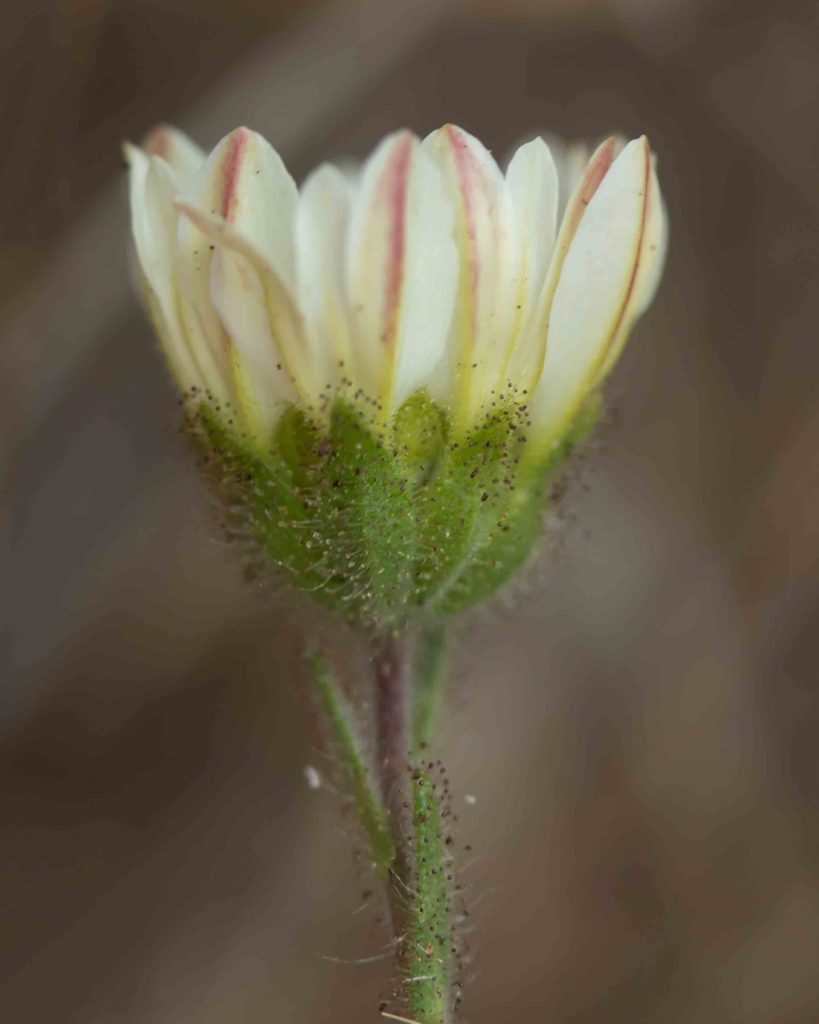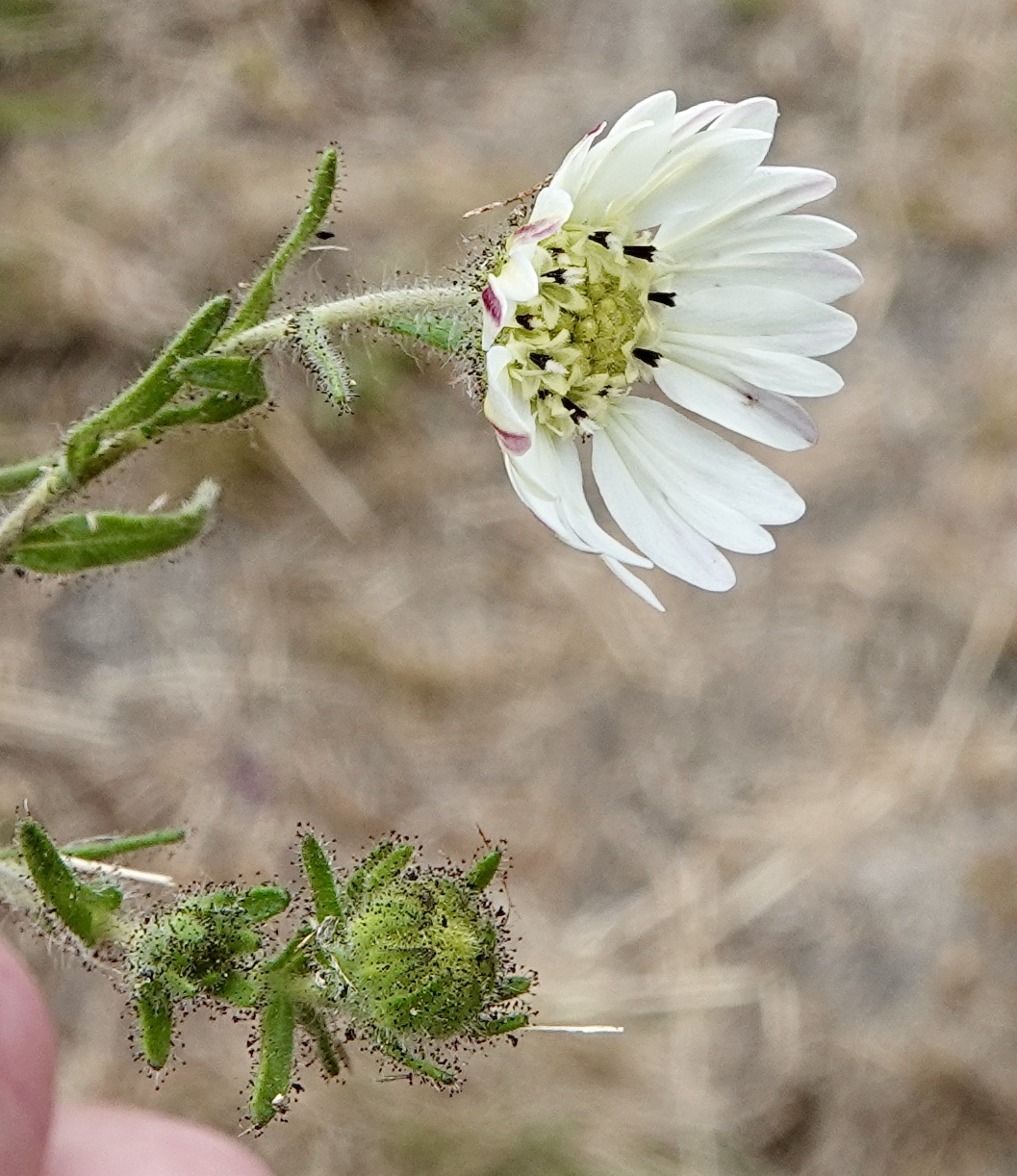Asteraceae: Sunflower Family – Heliantheae (Sunflower) Tribe: various tarweeds
The Sunflower family is a very large family with over 25,000 members. Botanists subdivide the family into a number of tribes, of which 14 are present in Monterey County. One of these, the Heliantheae or Sunflower tribe, is further broken down into subtribes, of which 9 are present. The Madia (Tarweed) subtribe includes some which have conspicuous glands, giving off a distinct, tarry odor. This page covers species with widely varying appearance.
Blow-wives – Achyrachaena mollis
Blooms:
Apr–May
Plant Height:
25–40 cm
Flower Size:
Small
Origin:
Native
Habitat:
Moist grassland
Notes:
The fruiting head of Blow-wives is much more striking than its inconspicuous 3–8 yellow ray flowers (which turn red at maturity). The fruit consists of a shiny black body, and the pappus. The pappus has 10 bright white scales in two series, the 5 inner scales much longer than the 5 outer. Although the fruiting heads are sometimes confused with Lindley’s Silverpuffs (Uropappus lindleyi), both the number and the appearance of the pappus scales are quite different. Photo #4 by CJH.
Big Tarweed – Blepharizonia laxa
Blooms:
July–Nov
Plant Height:
10–180 cm
Flower Size:
Medium
Origin:
Native
Habitat:
Woodland openings, chaparral, grassland
Notes:
Most tarweeds are yellow. There are two creamy-white ones, this and Hayfield Tarweed (Hemizonia congesta subsp. luzulifolia, see below). They are confusingly similar. Big Tarweed has dark purple anthers. Its stems are erect, with spreading or arched branches, and conspicuous stalked glands. The inflorescence has several heads, each with 5– 13 ray flowers, 5– 10 mm long. Phyllaries are in one series. Leaves are narrow, up to 15 cm long; the upper leaves are also stalked-glandular. One needs to be up early to enjoy the flowers at their best, they may be withered by mid-morning. To distinguish this from Hayfield Tarweed, note this is more uncommon, and blooms from July onward, in the morning. Also, this has narrow phyllaries, with sharp points, that meet to completely enclose the buds. Also, the fruits are at least 2 x longer than wide.
Fitch’s Spikeweed – Centromadia fitchii
Blooms:
May–November
Plant Height:
5–50 cm
Flower Size:
Medium
Origin:
Native
Habitat:
Dry hills & plains, inland
Notes:
Centromadias are most easily recognized by their conspicuous spine-tipped peduncle bracts. Fitch’s Spikeweed has stalked glands on its leaves and peduncle bracts, is consistently hairy and has red to dark purple anthers. The bright yellow ray flowers are 2-lobed, unlike most tarweeds which are 3-lobed.
Congdon’s Tarplant – Centromadia parryi subsp. congdonii
Blooms:
June–Oct
Plant Height:
10–70 cm
Flower Size:
Medium
Origin:
Native
Rare or Endangered?
Yes – 1b.1
Habitat:
Grasslands and disturbed areas in the Hwy 68 corridor
Notes:
This rare plant is generally low-growing and scented, with yellow-green leaves and spine-tipped peduncle bracts. Unlike Fitch’s Spikeweed (Centromadia fitchii, see above), the peduncle bracts are glabrous, to more or less coarsely hairy, but seldom glandular. Heads contain 9– 20 yellow, 2-lobed ray flowers and 40+ disk flowers with yellow or brownish anthers.
Coastal Tarweed – Deinandra corymbosa
Blooms:
May–Oct
Plant Height:
30–100 cm
Flower Size:
Medium
Origin:
Native
Habitat:
Grassland & woodland, at or near the coast
Notes:
This aromatic plant is common, especially by the coast. The flower heads have 14–35 ray flowers, 24–70 disk flowers and a shallow involucre. This separates it from Coast Tarweed (Madia sativa) which has only 8–13 ray flowers, 11–14 disk flowers, and a more rounded involucre. The upper leaves are linear and crowded below the inflorescence, while the lower leaves are pinnately-lobed. The plant can be found in large quantities. Photos #2-3 by CJH.
Three-rayed Tarweed – Deinandra lobbii
Blooms:
May–Dec
Plant Height:
5–70 cm
Flower Size:
Small
Origin:
Native
Habitat:
Dry, interior hills
Notes:
A small, much-branched plant. The inflorescence is in panicle-like cluster with 3 deep yellow, 3–5 mm ray flowers and 3 disk flowers. Anthers are red to dark purple. Subtending bracts sometimes partly overlap the glandular phyllaries. Leaves are gray-green, rough and with stiff hairs. Not to be confused with Slender Tarweed (Madia gracilis) which can sometimes have only 3 ray flowers but which has a differently shaped involucre and a different growth habit.
Hayfield Tarweed – Hemizonia congesta subsp. luzulifolia
Blooms:
Mar–Dec
Plant Height:
5–80 cm
Flower Size:
Medium
Origin:
Native
Habitat:
Disturbed open, grassy sites, chaparral edges
Notes:
Most tarweeds are yellow but there are two creamy-white ones. This plant, with its 5–11 white ray flowers, white disk flowers and dark purple anthers, might easily be mistaken for Big Tarweed (Blepharizonia laxa, see above). But it can be distinguished in several ways. First, this is more common, begins blooming in March (not July), and the blooms persist all day (not just mornings). Also, its phyllaries are broader, with a clear central ridge, and much smaller (and often black) glands. Its buds are very distinctive, with the outer phyllaries having clearly separated tips, which curve towards but do not reach the center. Most clearly (if they are visible), the fruits are short and fat, no more than 2 × as long as they are wide (see photo #3); quite different from those of Big Tarweed. Photos #3-4 by CJH.
